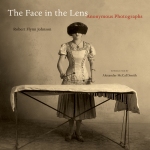The introduction essay “Being Human” by Alexander McCall Smith reiterates Barthes ideas about the photograph as momento mori and the power that lies in photographs of strangers verse photographs of loved ones.
“Because we do not know the subjects we are not distracted by memories of the particular, and are drawn, instead, to what the photograph says about people and their ways, about the human condition. It is this that explains the poignancy of old anonymous photographs: they show us in all our human vulnerability. Our aspirations, our beliefs, our sense of ourselves are all revealed – but all of this is shown to be transient, impermanent ” (7).
The collector and author Robert Flynn Johnson also has an introductory essay in the book titled “Whole in One.” This essay begins by comparing the act of taking a great photograph akin to an amateur golfer achieving a hole in one; an improbable occurrence but one that happens often enough if we take enough photographs. This book collects photographs that are equivalent “hole in ones” and presents them according to theme. Chapters include Immaturity, Masculinity, Femininity, Compatibility, Celebrity, Singularity, Activity, Festivity, Adversity, and Inevitability. One of the issues with found photographs is that they lack context. Arranging the photographs by subject provides an artificial order to the images and the chapters consist of some imaginative groupings. The names of the chapters are creative and more engaging than if they were put into more traditional categories.
After looking at this book, my main take away was the divide between the photo album and the lone image. The most interesting part of a photo album or scrapbook is the context that the whole provides. The parts that make up the whole may be unidentified photographs but contextually the group of materials offers much more information than the single image. Johnson has provided a framework for the lone photographs to exist in – to become part of his collection which can then be arranged by theme. The subjects of the photographs are similar, but the people in them will never correspond to each other in the way that a small photo album collection can. Both the lone image and the photo album collection have stories to tell, but one is much broader and relies more on visual appreciation, while the other can tell a more detailed story about a particular family or group of individuals at a particular time in history.

